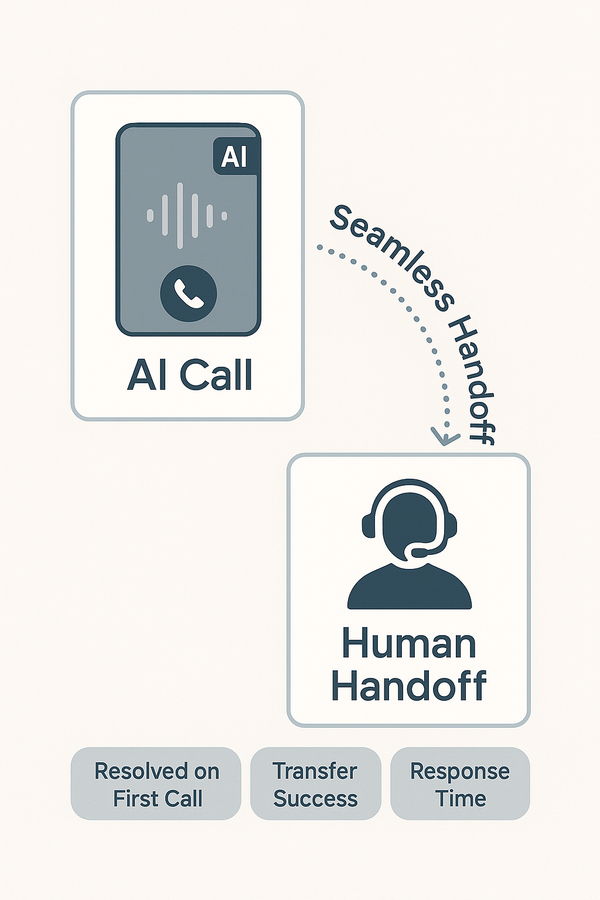Tired of hearing about AI revolutionizing the world while you're still on the sidelines? This is your playbook. Forget needing VC funding or a massive team. We're going to show you how to find a painful problem, validate that people will pay you to solve it, and launch a lean, automated AI business in just seven days.
Let's build. 🚀
Series: AI Money-Making Playbooks 💰
Who it’s for: Solo founders & small, scrappy teams
Outcome: Launch a validated AI offer + land your first paying customers
Time to value: 7 days flat
Start here: If your goal is to make money with AI this month, the fastest path to cash is acquiring clients → AI Lead Generation Hub
In This Playbook (Table of Contents)
- The 5-Step System in 60 Seconds
- Your Superpower: Why Being "Too Small for VC" is a Massive Advantage
- Step 1: Find Your Goldmine Idea in 30 Minutes
- Step 2: The Ultimate Truth Test (Will They Actually Pay?)
- Step 3: Build Fast, Build Smart
- Step 4: The Unstoppable 5-Channel Growth Engine
- Step 5: Build a Business That Runs Itself
- Your 7-Day Launch Plan
- Frequently Asked Questions
- Key Terms You Need to Know
- Related Playbooks
The 5-Step System in 60 Seconds
- Find the Pain: Use our 30-minute Google "Autocomplete Drill" to uncover what real people are desperately searching for.
- Validate with Cash: Forget vanity metrics. Use a simple landing page and a pre-sale offer to see if people will actually pull out their credit cards.
- Build the MVP: Use AI-powered dev tools to build a functional prototype ridiculously fast. Harden it for scale after you have paying customers.
- Start the Flywheel: Ignite growth with a 5-channel engine designed for lean teams (Social, SEO, Affiliates, Communities, and Free Tools).
- Automate Everything: Design your business to run on autopilot with AI agents, so you can focus on growth, not grunt work.
The Hard Truth (2025-10-06): Clicks are cheap and signups can lie. A pre-sale is the only signal that matters because it measures willingness to pay.
Your Superpower: Why Being "Too Small for VC" is a Massive Advantage
Venture capitalists are hunting for unicorns. That means they ignore thousands of incredibly profitable, low-competition niches. This blind spot is your battleground.
Your edge is precision:
- Go Niche: Target a specific role in a specific industry. (e.g., "An AI quoting assistant for independent insurance brokers").
- Solve One Problem, Perfectly: Don't try to build an all-in-one platform. Find one hated, repetitive workflow and completely eliminate it.
- Expand from a Beachhead: Once you have happy customers, cross-sell adjacent micro-tools and build your empire one solved problem at a time.
Pro Tip: Think like a portfolio manager. Build a suite of simple tools. One or two will become your cash cows; the rest will serve as powerful lead magnets and cross-sell opportunities.
Step 1: Find Your Goldmine Idea in 30 Minutes 💡
A) The "Scratch-Your-Own-Itch" Test
List ten workflows you personally hate doing. For each one, ask these three non-negotiable questions:
- Would I happily pay a monthly fee to make this disappear forever?
- Can an AI model handle 80% of this task well enough?
- Is the data I need accessible via an API, my inbox, or a file I can upload?
If it's a "yes" to all three, you've got a potential winner.
B) The "Autocomplete Drill" (Your 15-Minute Market Research Secret)
Open a private browser window. Type these patterns into Google and see what real people are searching for:
AI agent that...AI tool for...automated reporting for...how to automate...
Google will show you a treasure map of market demand. Grab the top 20 long-tail suggestions and pop them into a keyword tool. You're looking for ideas with clear buyer intent and winnable search results (meaning the top spots are held by weak content or low-authority sites).
Local Angle: Hyper-niche by geography. Think: “AI appointment setter for plumbers in Dallas.” The competition is near zero.
Step 2: The Ultimate Truth Test (Will They Actually Pay?) 💸
Your only job at this stage is to kill bad ideas before they waste your time and money.
1) Build a One-Screen "Waitlist" Page
Use a simple builder like Framer or Webflow. No complex designs. It needs just four things:
- An Outcome-Driven Headline: "Cut client onboarding time from 5 hours to 15 minutes."
- Three Bullet Points: Explain the inputs, the output, and the magic.
- One Email Field: Nothing else. Don't ask for a name or phone number.
- A Simple Privacy Promise: "No spam. Just 1-2 updates on our launch."
2) The Pre-Sale: The Only Test That Matters
- Manual Outreach: Find 100 potential customers in forums, social media DMs, or small email lists. Pitch them your solution. If you get zero waitlist signups after 100 attempts, your idea is dead. Tweak it or move on.
- The Offer: Email your waitlist a one-time-only "founding member" offer. Give them a massive 60–80% discount to pre-order before you've even finished the product.
- The Benchmark: You need a minimum of 10% conversion from your waitlist to a paid pre-sale. If you miss this target, the problem you're solving isn't painful enough.
Why email, not just a checkout button? Because the replies are pure gold. People will tell you exactly why they're not buying, revealing priceless objections about your pricing, features, or packaging that you can fix instantly.
Step 3: Build Fast, Build Smart 🛠️
Prototype at Light Speed, Harden for Production
Your goal is to get a working version in front of paying customers ASAP.
- Prototype: Use AI-assisted dev tools like Cursor, Replit, or Bolt to build the core user flow in hours, not weeks.
- Production: Once validated, build your robust stack. Think Next.js/Postgres, proper authentication, background jobs, and monitoring.
The Two-Site Rule for Speed and SEO
Don't build your marketing site and your app as one monolith.
- Marketing Site: Use Framer or Webflow. It's faster, easier for your marketing team to edit, and optimized for SEO out of the box.
- The Application: This is your core product. Build it on a proper framework designed for security, reliability, and data management.
Step 4: The Unstoppable 5-Channel Growth Engine
1) The Social → SEO Flywheel
Test your messaging and content ideas on social media. The posts that resonate will naturally earn mentions and backlinks, boosting your SEO rankings without you ever having to do manual link-building.
2) Fish Where the Fish Are
List your tool on niche directories, relevant subreddits, and industry newsletters. Go where your ideal buyers are already looking for solutions. This creates trusted, structured citations that search engines and AI assistants love.
3) Make Your Affiliates Rich
Don't be cheap. Offer a recurring commission that partners actually care about (30-40% for life is a great starting point). Give them everything they need to succeed: swipe copy, graphics, and a real-time dashboard. And most importantly: pay them on time, every time.
4) Win with Content
Use your "Autocomplete Drill" research to create a content calendar. Publish simple how-to guides, checklists, and templates that answer the exact questions your customers are asking Google.
5) Build Tiny, Irresistible Lead Magnets
Create a free micro-tool that solves one tiny piece of your customer's problem right now.
- For Realtors → A free AI Listing Description Generator.
- For Artists → A free Album Cover Idea Generator.
- For Contractors → A free Scope of Work Formatter.
Gate the final download behind an email address, then use a short, automated email sequence to naturally introduce your paid product.
Step 5: Build a Business That Runs Itself 🤖
Design your operations for "default-run"—a state where AI agents handle everything on schedule and only escalate to you when they're uncertain or a decision involves money.
- Daily: AI handles data syncs, lead enrichment, and flags anomalies.
- Weekly: AI generates customer health reports and proposes new content ideas.
- Monthly: AI summarizes usage data and suggests pricing experiments.
Your Starter Automation Stack:
- Automated onboarding email sequence.
- Automated invoices, receipts, and payment reminders.
- A weekly digest email: "Here's what your AI agent accomplished for you this week."
- Automated backup jobs and error alerts.
- Automated churn surveys and win-back offers.
Your 7-Day Launch Plan
| Day | Action | Your Mission |
|---|---|---|
| Day 1 | Run the Autocomplete Drill. Shortlist 10 ideas with real search demand. | Identify a hungry market. |
| Day 2 | Pick one idea. Build your one-screen waitlist page. | Create your validation asset. |
| Day 3 | Reach out to 100 potential users and drive them to your waitlist. | Get initial validation signals. |
| Day 4 | Launch the pre-sale to your waitlist. Make the Go/No-Go decision. | Validate willingness to pay. |
| Day 5 | Prototype the core workflow of your product using AI-assisted tools. | Build a functional demo. |
| Day 6 | Publish one SEO blog post and submit your tool to 5 niche directories. | Ignite the growth engine. |
| Day 7 | Automate onboarding and billing. Ship the MVP slice to your first customers! | Launch your autonomous product. |
Frequently Asked Questions
Is the Google Autocomplete drill actually a reliable way to find ideas?
Absolutely. Those suggestions come directly from what millions of people are typing into the search bar. It's one of the purest sources of market demand data on the planet.
How do I really know if people will pay?
You run a pre-sale. It’s the ultimate test. Ask people for money before the product is built. If you can get at least 10% of your waitlist to convert, you're onto something big.
What if my pre-sale fails?
Congratulations! You just saved yourself six months of building something nobody wants. It's a cheap lesson. Tweak your offer, pivot your audience, or move on to the next validated idea on your list.
Key Terms You Need to Know
- Waitlist Pre-Sale: The act of selling a discounted version of your product before it's built to validate that people will actually pay for it.
- Autocomplete Drill: A rapid market research technique using Google's search suggestions to find low-competition, high-demand product ideas.
- Default-Run: A system designed for automation, where AI agents execute scheduled tasks and only escalate to a human for high-risk decisions or low-confidence predictions.
Related Playbooks
Ready for the next step?
Reduce Business Costs with AI · Automate Customer Retention with AI




